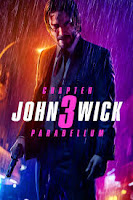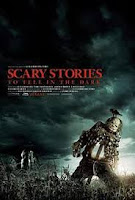5. In relation to the media area you have studied, discuss the ways audience consumption has changed over time.
Concerning films, audience consumption has significantly changed over time in many ways. Specifically, the United States has a huge film. In fact, the global box revenue is predicted to increase from 38 billion U.S dollars to 50 billion U.S dollars this year. Nowadays you can consume films from a mobile device anywhere at any time, instead of cinemas or television.
Initially, audience consumption has changed by allowing films to be streamed at home. Before 1927, the only way people would watch films was by going to the cinema. This gained rapid popularity because watching films gave people a brief escape from reality. According to Khan Academy, “For a quarter, Americans could escape from their problems and lose themselves in another era or world… By the end of the decade, weekly movie attendance swelled to 90 million people.” This statement proves that watching films became a normal activity that everyone loved. According to an article from New York University, “Electronic television was first successfully demonstrated in San Francisco on Sept. 7, 1927. The system was designed by Philo Taylor Farnsworth, a 21-year-old inventor who had lived in a house without electricity until he was 14.” Due to this, people switched from cinemas and began to stream films at home. In the case study Furious 7, they paired up with IMAX, theaters known for having very large screens with a tall aspect ratio and steep stadium seating, which allows audiences to watch films better there. Another way audience consumption has changed is by home exhibition. For instance, the case study Beauty and The Beast released the film on Blu-ray, a digital optical disc data storage, for audiences at home. They also advertised for the release of the film by cooperating with ABC, an American commercial broadcast television network that is a flagship property of Walt Disney Television. As well as Walt Disney cross-media convergence to promote the film on multiple platforms. This was seen by special iMessage stickers on iPhones and Twitter. With these stickers, the audience may unconsciously be familiar with the film. Ultimately, the film made $1.3 billion worldwide. Therefore, the way audiences consume films has changed drastically compared to the 1920s; you could not watch movies at home when now most films permit it.
In the following years, the audience’s film consumption continues to change. In 1971, the creation of videocassettes emerged on the market. These devices allowed people to watch videotapes, and forward and rewind videos. A major change in how audiences consumed film was in the 90s when DVDs where invented. According to South Tree, “throughout the late 70s, all of the 80s and up until the mid-90s, the VHS became what everyone had known. You could watch it, record over it, rewind and fast-forward it. ... By 1978, the DVD's predecessor, Laserdisc, was developed and released in America.” This statement implies that videocassettes gave people the opportunity to make their videos and make money from them. Although people started streaming films in the 90s, it became popular around 2004. By then, and still, now, most people stream films at home through Netflix or other platforms such as Hulu, Disney Plus, or Amazon Prime. This resulted in binge-watching, where people started to watch tv shows back to back, instead of watching commercials like you must do when you have cable. According to the Spiderman Homecoming case study, the production was by Columbia Pictures and Marvel Studios. They had a soundtrack and paired up with Cinnamon Toast Crunch to advertise the film. They also made the film available to stream on Xfinity, used to market consumer cable television, internet, telephone. With the help of technology, films were able to advance from moving pictures to digital software. This is supported by the article, HOW TECH HAS SHAPED FILM MAKING: THE FILM VS. DIGITAL DEBATE ISPUT TO REST, stating, “Distribution through YouTube has been the most common form of marketing for quite some time. Studios have released big-budget trailers, while indie film makers have sought funding and interested eyes posting content through various YouTube channels.” This means that audiences can view clips, scenes, or trailers of films before they are released. An example of this would be the Jurassic World case study. They advertised the film on the Internet and TV. To give audiences different perspectives, they released four different trailers of the same film on YouTube. Not to mention, they advertised the film by adding it to video games and toys. As a result, “Jurassic World became the third largest grossing movie of all time dominating the box office and was nominated for a substantial amount of awards.” This film was a huge success due to the advancements in film and usage of technology throughout the years.
Overall, these are the many ways in which audiences consuming films has changed over time. Since the first film was made in 1910, the way that audiences consume films has changed drastically due to the advancements in films and technology. With all that is going on, streaming online is as vital as ever because audiences can enjoy the entertainment of films.































